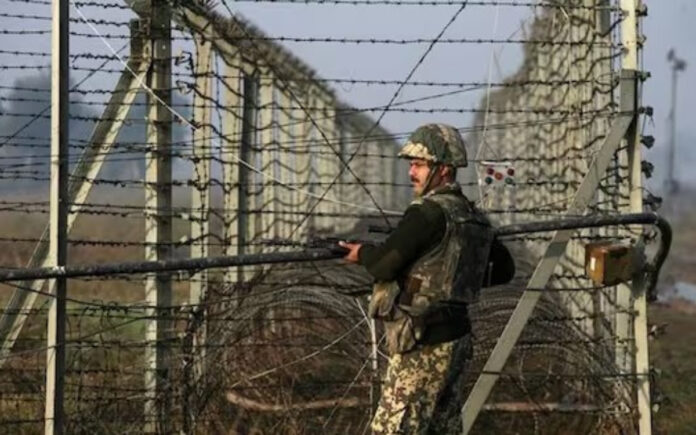New Delhi/Islamabad: Just after 8:00 p.m. on May 8, red flares pierced the skies over Jammu in northern India as Indian air defense systems sprang into action, targeting a swarm of drones launched from neighboring Pakistan.
While India and Pakistan have a long and volatile history of military confrontations—often involving fighter jets, artillery, and missiles—the four-day exchange in May marked the first large-scale use of unmanned aerial vehicles (UAVs) by both nations against each other.
Though the hostilities paused following a U.S.-brokered ceasefire, experts say the conflict has unlocked a new frontier in the military rivalry between the nuclear-armed neighbors, who collectively spent more than $96 billion on defense last year. According to interviews conducted by Reuters with 15 security officials, analysts, and industry insiders across India and Pakistan, both nations are now accelerating their UAV programs in what appears to be a rapidly escalating drone arms race.
Two of those interviewed believe UAVs will increasingly be employed by both sides, as they provide a means to carry out strikes with minimal risk to personnel and reduced chances of provoking large-scale retaliation.
India, in response to the growing threat, is significantly ramping up domestic investment in drone technology. According to Smit Shah of the Drone Federation of India—which represents more than 550 companies and maintains frequent engagement with the government—India could spend up to $470 million on UAVs over the next one to two years, a figure nearly triple its pre-conflict investment.
This projection aligns with India’s recent approval of roughly $4.6 billion in emergency military procurement, part of which is expected to fund the acquisition of combat and surveillance drones, two Indian officials confirmed.
Typically, Indian defense procurement is bogged down by lengthy bureaucracy. However, in a striking shift, drone manufacturers are now being invited to participate in field trials and demonstrations at an unprecedented rate, said Vishal Saxena, Vice President at Indian UAV manufacturer ideaForge Technology.
Across the border, the Pakistan Air Force is also accelerating efforts to expand its drone fleet, in part to reduce the reliance on its limited number of advanced aircraft, a Pakistani source familiar with the matter stated.
Both countries deployed 4.5-generation fighter jets during the latest conflict, but Pakistan, facing economic constraints, has only around 20 Chinese-made J-10 aircraft. In contrast, India boasts a fleet of approximately three dozen French-made Rafale jets.
To bridge the gap, Pakistan is expected to deepen its drone development partnerships with China and Turkey. Oishee Majumdar of defense intelligence firm Janes noted that Islamabad is already enhancing its domestic UAV production through collaborations like the one between the National Aerospace Science and Technology Park and Turkey’s Baykar, which assembles the YIHA-III drone locally. A Pakistani source revealed that a new unit can be manufactured domestically within two to three days.
While Pakistan’s military did not respond to Reuters’ queries, India’s Ministry of Defence and Turkish manufacturer Baykar also declined to comment.
“India and Pakistan appear to view drone strikes as a way to apply military pressure without immediately provoking large-scale escalation,” said Walter Ladwig III, a political scientist at King’s College London.
“UAVs allow leaders to demonstrate resolve, achieve visible effects, and manage domestic expectations — all without exposing expensive aircraft or pilots to danger,” he added.
Nonetheless, UAV-based warfare still carries risks. Ladwig warned that drones might increasingly be used in contested or densely populated areas where manned aircraft might previously have been withheld.
Drone Swarms and Cold War Weapons
The escalation followed a deadly militant attack on April 22 in the disputed Kashmir region that left 26 people—mostly Indian tourists—dead. Delhi blamed “terrorists” backed by Islamabad, an allegation Pakistan denied. In retaliation, India launched air strikes on May 7 targeting what it called “terrorist infrastructure” in Pakistan.
In response, Pakistan sent between 300 and 400 drones along a 1,700-kilometer front across 36 locations to test India’s air defenses, Indian officials said.
These UAVs included Turkish-made YIHA-III and Asisguard Songar drones, and Pakistan’s own Shahpar-II, developed by the state-run Global Industrial & Defence Solutions.
Remarkably, India countered this offensive with Cold War-era anti-aircraft guns upgraded with modern radar and communications systems by Bharat Electronics. Despite being outdated in design, the retrofitted guns proved unexpectedly effective, according to two Indian officials.
A Pakistani source disputed the claim that large numbers of its drones were destroyed, although Indian infrastructure appeared to remain largely unscathed.
Retired Indian Brigadier Anshuman Narang, now an expert on UAVs at the Centre for Joint Warfare Studies in Delhi, remarked, “Ten times better than what I’d expected,” regarding the guns’ performance.
India also deployed Israeli-made HAROP drones, Polish WARMATEs, and indigenous UAVs for both reconnaissance and precision strikes, according to one Indian and two Pakistani sources. The HAROPs, in particular, are loitering munitions designed to hover over a target before crashing into it with explosive force.
Also Read | Aleema Khan Delivers Imran’s Message: No Deal with Military or Foreign Powers
Pakistan countered by using decoy radars and intercepting drones that dipped below 3,000 feet at the end of their flight paths, making them easier to shoot down, a third Pakistani source said.
While both nations claimed successes, experts say the strategic advantage lies in the cost-effectiveness and low-risk nature of drone warfare.
“India successfully targeted infrastructure within Pakistan with minimal risk to personnel or major platforms,” noted Ladwig. Meanwhile, Pakistan claimed it struck Indian defense installations, signaling strength without inviting international backlash.
Cheap but Vulnerable
Despite suffering drone losses, both sides are pressing forward.
“We’re talking about relatively cheap technology,” said Michael Kugelman, a South Asia expert based in Washington. “And while UAVs don’t have the shock and awe effect of missiles and fighter jets, they can still convey a sense of power and purpose for those that launch them.”
Indian defense planners are especially focused on expanding their capacity to develop loitering munitions, said Sameer Joshi of Indian drone company NewSpace.
“Their ability to loiter, evade detection, and strike with precision marked a shift toward high-value, low-cost warfare with mass-produced drones,” Joshi noted.
ideaForge, which has supplied over 2,000 UAVs to Indian forces, is now investing in enhancements to resist electronic warfare, said Saxena.
However, one significant challenge remains: India’s reliance on Chinese components for critical drone parts. Despite the geopolitical tension and China’s close ties with Pakistan, Indian manufacturers still depend heavily on Chinese-made magnets and lithium for drone batteries, four Indian drone experts said.
Also Read | Pakistan Open to Dialogue with India on Kashmir, Trade, and Water-Sharing: PM Shehbaz Sharif
“Weaponization of the supply chain is also an issue,” Saxena pointed out, referring to the possibility of Beijing halting component supplies in times of crisis.
Smit Shah echoed the concern: “Diversification of the supply chain is a medium to long-term problem. You can’t solve it in the short term.”
Beijing, in response to questions from Reuters, stated that it follows strict export control regulations for dual-use goods in line with domestic laws and international responsibilities.
The future of drone warfare in South Asia is now a question not just of technology, but of supply chain resilience, regional diplomacy, and strategic intent.



